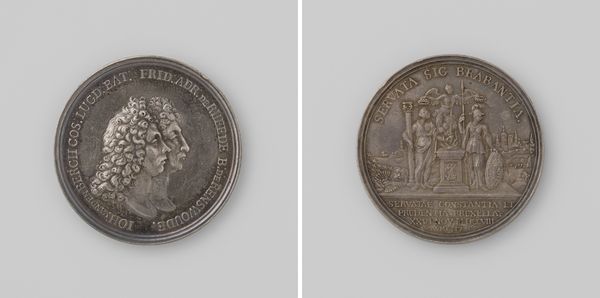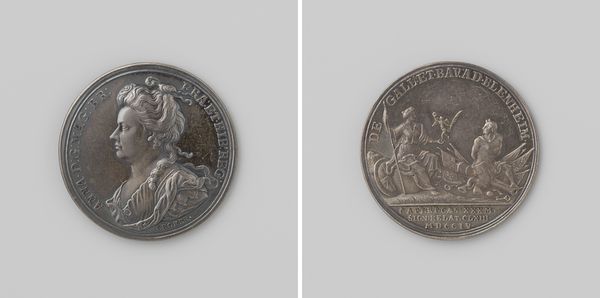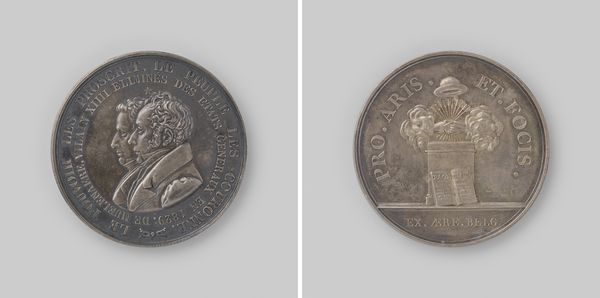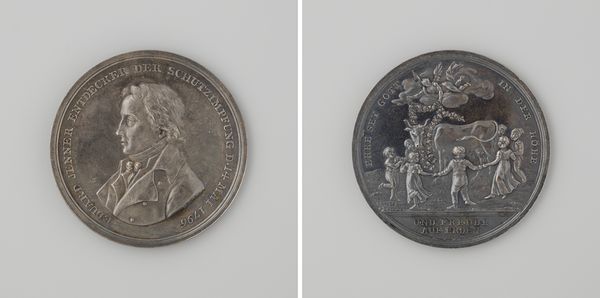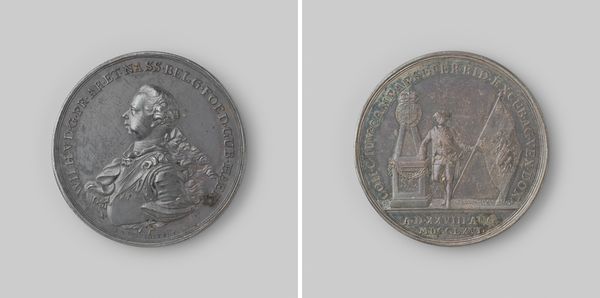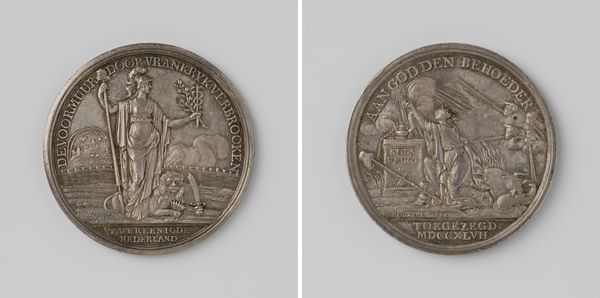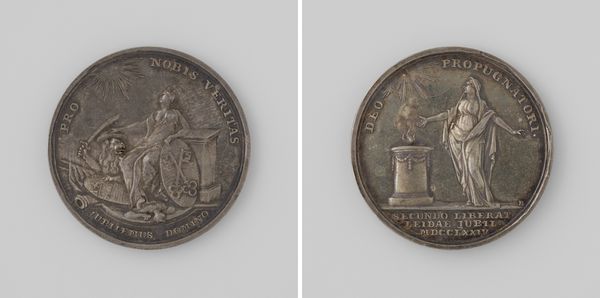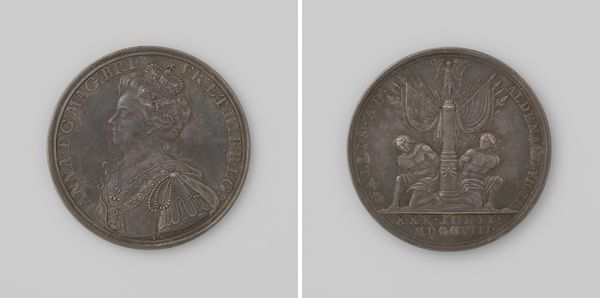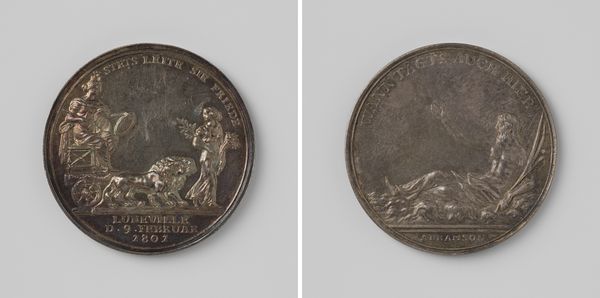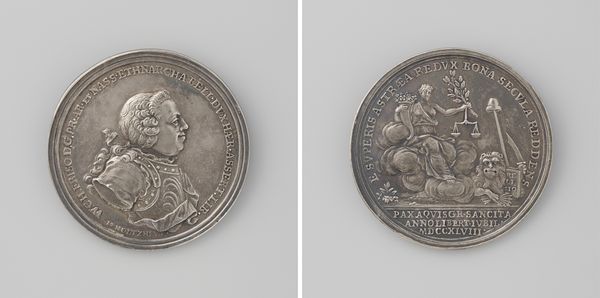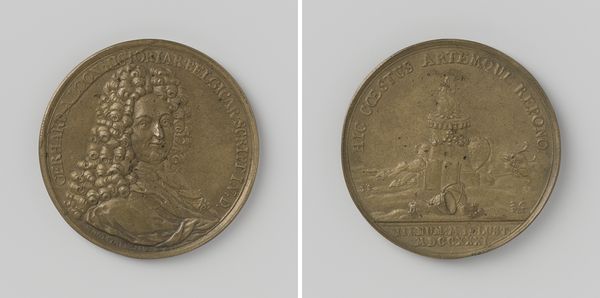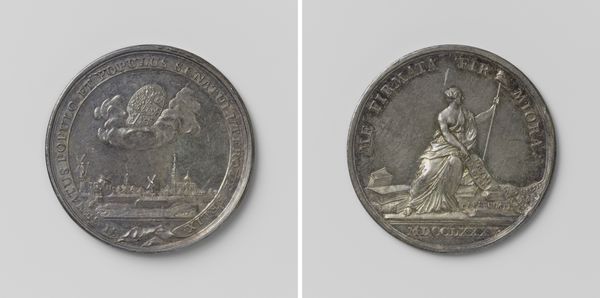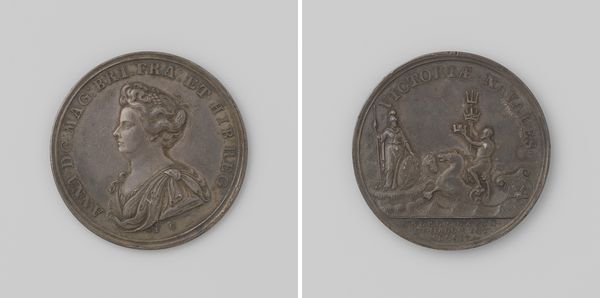
Derde eeuwfeest van de inname van Den Briel, ter ere van Willem I, prins van Oranje-Nassau 1872
0:00
0:00
Dimensions: diameter 5.7 cm, weight 53.89 gr
Copyright: Rijks Museum: Open Domain
Editor: So this is a metal relief sculpture created by Jan Daniel Posthumus in 1872. It's titled "The Third Centenary of the Capture of Brielle, in Honour of William I, Prince of Orange-Nassau." I'm immediately struck by the detailed rendering of both the portrait of William and the allegorical figure. What story does the choice of material and the production process tell us about its meaning? Curator: This commemorative medal provides fascinating insights into the political and social currents of the Netherlands in the late 19th century. Metal, as a medium, lends itself to mass production, reflecting the desire to widely disseminate this patriotic message. The relief sculpture, cast from molds, would have allowed for a degree of reproducibility accessible to a wider public. Editor: So, it's not just about remembering a historical event, but also about...manufacturing patriotism, in a way? Curator: Precisely. Think about the labor involved in creating the molds, the casting process itself, and the potential for mass distribution. Who were the intended consumers of this imagery, and how might this object have circulated? It wasn’t merely an artwork, but an artifact embedded in networks of production, consumption, and national identity. Editor: It makes me consider who commissioned it and what statement they wanted to broadcast through this object. What do you make of the neoclassical style influencing a commemorative piece? Curator: The adoption of a Neoclassical style, with its allegorical figure, evokes a sense of timeless virtue and authority, linking the modern Dutch state to classical ideals of liberty and civic duty. Consider, then, how these forms reinforce prevailing power structures. How might we interpret the relationship between these representations and other forms of material culture circulating at the time? Editor: This has definitely expanded my understanding from a simple historical record to an understanding of how material production shapes historical narratives. Thanks. Curator: My pleasure! Understanding the material processes involved really changes how we view this piece, and connects art making with labor and industry.
Comments
No comments
Be the first to comment and join the conversation on the ultimate creative platform.
